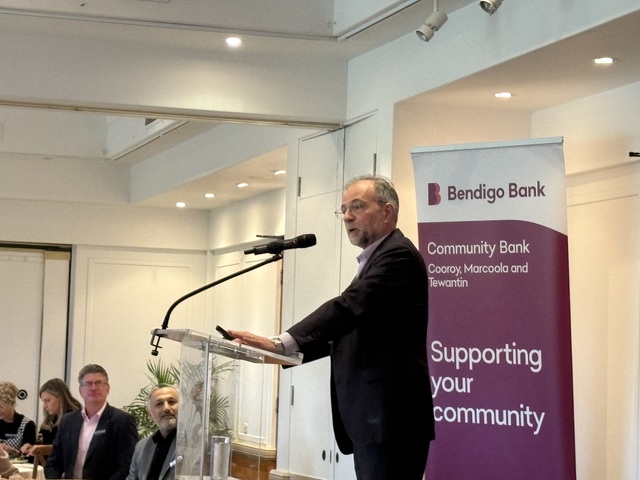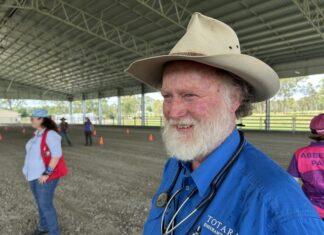Bendigo Bank’s chief economist, David Robertson, returned to Noosa Springs Resort on Wednesday 23 July to deliver an insightful and entertaining analysis of the local and global economy.
Recognised as one of Australia’s most trusted voices on the economy, David shared his professional economic forecasts, providing valuable predictions.
Here’s David’s 10 predictions for the 2026 financial year and five fun facts to follow:
10 economic predictions for the 2026 financial year:
1. More rate cuts in advanced economies other than the US (constrained by their own tariffs).
2. Global growth to slow to 2.75 per cent but not collapse.
3. More policy support in Chinese achieving 4.5 per cent growth despite trade wars.
4. Financial markets to remain volatile for FX, bonds and stocks.
5. US tariffs will end the period of ‘US exceptionalism’ and risk stagflation in H2 of ‘25.
6. RBA to cut rates another three times: a relatively shallow easing cycle to around 3 per cent.
7. Australian core inflation to remain below three per cent.
8. Unemployment to increase by 0.5 per cent to > 4.5 per cent (but still lower than in 2019).
9. Australia less impacted by tariffs, AAA rating to guard us from global sovereign debt fears.
10. Gains in house prices nationally fairly modest (less than four per cent): WA, QLD and SA/ NT gains offsetting small falls in Victoria and Tasmania (NSW flat).
Five fun facts:
1. Australian superannuation assets now exceed A$4 Trillion, while total residential dwellings are valued at over A$11 Trillion (with mortgage debt of just under A$3 Trillion).
2. Australia has one of the least competitive company tax rates in the OECD. We’re the third highest, with only Columbia and Portugal having a higher tax rate.
3. Queensland farm-land values have grown by 8.4 per cent year on year for 20 years (compounding average growth rate) with the median price doubling in the last five years.
4. Australia’s population today is 27.7 million. In the year 2000 it was 19 million and in 1900 it was 3.77 million. Even today, we still have more hectares of arable land than people.
5. ‘AI 2027 ’ predicts (amongst other things) that by the end of 2027, ASI (artificial superintelligence) systems will have an intellectual scope beyond human intelligence.









